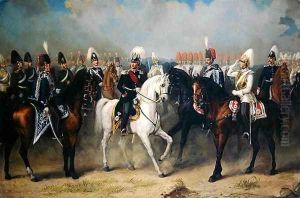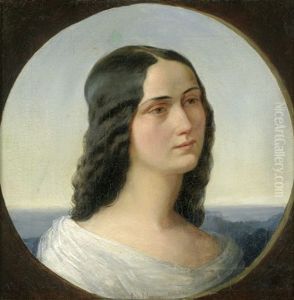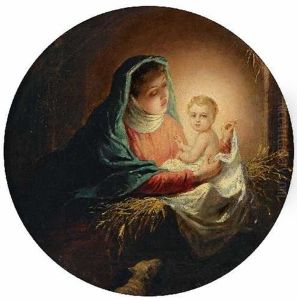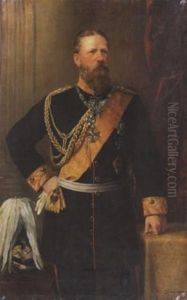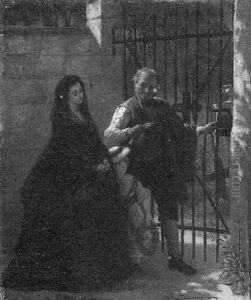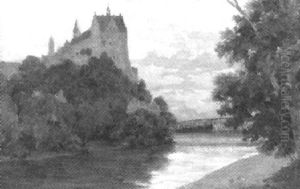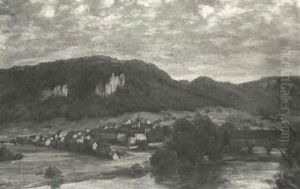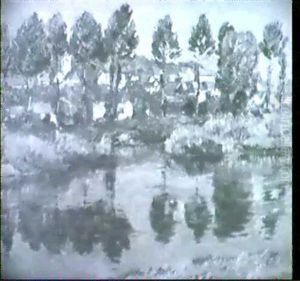Fritz Hummel Paintings
Fritz Hummel was a notable German painter and etcher born in 1854 in Berlin, Germany. His artistic journey began at a young age, influenced by the vibrant cultural atmosphere of Berlin, a city known for its rich artistic heritage. Hummel's early years were marked by rigorous training and education in the arts. He was admitted to the Prussian Academy of Arts, where he honed his skills and developed a distinctive style that would later define his career. The Academy, renowned for its emphasis on classical art and techniques, provided Hummel with a solid foundation in both painting and etching, allowing him to explore and experiment with various subjects and mediums.
Throughout his career, Fritz Hummel became best known for his portraits and genre scenes, capturing the essence of his subjects with remarkable detail and sensitivity. His ability to depict the nuances of human expression and the intricacies of daily life earned him acclaim both in Germany and internationally. Hummel's works, characterized by their realism and emotional depth, reflect the socio-cultural dynamics of his time, offering insights into the lives of people during the late 19th and early 20th centuries.
In addition to his painting, Hummel was an accomplished etcher, employing a technique that allowed him to produce works with fine detail and rich texture. This skill further enhanced his reputation as an artist capable of capturing the complexity of his subjects with precision and elegance.
Hummel's contributions to German art were recognized during his lifetime, and he was a member of various artistic societies, including the Berlin Secession, an association of artists that sought to break away from the traditional academic art of the time. His involvement with the Secession highlighted his commitment to innovation and his support for the avant-garde movement in Germany.
Fritz Hummel's legacy is preserved through his works, which continue to be admired for their technical mastery and expressive power. He passed away in 1939, leaving behind a body of work that remains influential in the study of German art history. Hummel's dedication to his craft and his impact on the artistic community ensure that he is remembered as a significant figure in the development of modern German art.
